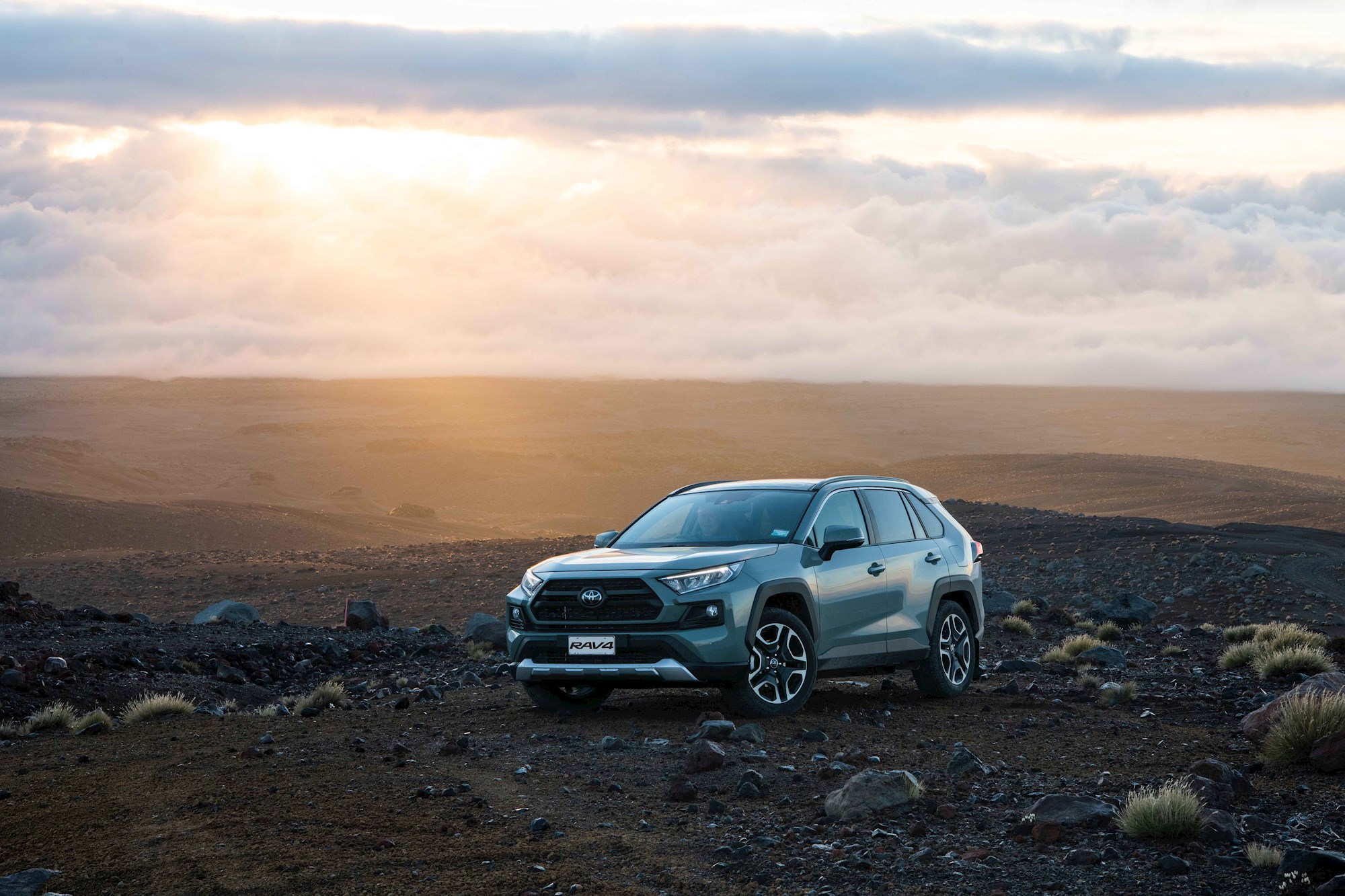Toyota New Zealand is nudging buyers of its new fifth-generation RAV4 compact SUVs towards hybrid models.
It has dropped the diesel-powered model from the range, and has specced-up the three hybrid models to lure buyers.
The new models are packed with the latest safety and driver assistance technology and are more efficient than the previous four generations of RAV4s.
Toyota helped pioneer the development of what has become a massive sector of the new vehicle market for SUVs, and almost 40,000 have been sold here since its introduction in 1995.
Toyota New Zealand’s general manager of product and new vehicle sales, Neeraj Lala, says the models are new from the ground up, and built on Toyota’s new global architecture that accommodates the current Camry and Corolla.
The result is a RAV4 that is roomier inside than previous models while also offering improved handling characteristics. All-round visibility from the driver’s seat is also improved.
Five petrol-powered models are in the range, three front-wheel drive models and two all-wheel drive. Drive-away prices range from $34,990 for the 2-litre GX front-wheel drive model, to $48,990 for the top-of-the-line 2.5-litre petrol Adventure RAV4, with a torque vectoring AWD system.
Driven sampled four of the eight models, including the best-looking Adventure model, during a launch in the central North Island last week. The driving route was from Toyota’s Palmerston North headquarters through to the Desert Rd section of SH1 and on to Mt Ruapehu, then on winding secondary roads through the Parapara Ranges, and back to Palmerston North. Along the way there was some mild off-roading on a farm near Hunterville.
The new models are a significant step-up in terms of handling compared with previous RAV4s, with some of the hybrid models having a new E-Four AWD system that helps the vehicle stick to the road no matter what the weather conditions.
They also look smarter, with a more aggressive stance than earlier models.
Through windy high-country roads, the RAV4 sits flat and true without the sway that characterised high-riding SUVS in the past.
The first RAV4 hybrid powertrain is available in three grades, GX, GXL and Limited, all in all-wheel drive. There are two all-wheel drive petrol grades, GXL and Adventure, and three front-wheel drive petrol grades, GX,GXL and Limited.
There are three powertrain options, including a 2.5-litre hybrid-electric petrol engine.
In hybrid models, there is a 131kW 2.5-litre petrol engine mated to an electronically-controlled CVT transmission. This increases to 163kW when combined with the hybrid system.
Toyota New Zealand says the combined cycle fuel consumption is 4.8 litres/100km, and the company expects that around half of all RAV4s sold will be hybrid models.
“The hybrid version will definitely lead the way with its no-compromise tow rating and overall fuel efficiency,” says Lala.
There is smooth, linear acceleration thanks to the way the system optimises the level of electric motor assistance and engine revs without the engine running at high revs.
In addition the RAV4 hybrid is the first Toyota in this country to include an E-Four AWD system that uses a dedicated electric motor to power the rear wheels when needed.
It sends up to 50 per cent of the torque to the rear axle and the differential can then send it in varying amounts to the individual wheels.
“Operating independently from the hybrid system’s front electric motor and driving the rear wheels alone, E-Four smoothly switches the RAV4 Hybrid AWD to all-wheel drive on slippery road surfaces and from stationary starts,” says the company.
The three urban-oriented front-wheel drive petrol variants feature a new 127kW, 203Nm 2-litre direct injection petrol engine coupled with a CVT transmission.
The new 2.5-litre engine produces 152kW of power and 243Nm of torque, and is paired with an 8-speed direct shift automatic transmission in the all-wheel drive petrol GXL and Adventure models.
Petrol all-wheel drive models have a mud and sand driving model for beach driving or rock and dirt for off-road trails, and the display unit in front of the driver shows the torque allocation and slip control available.
The new RAV4s are wider and have a longer wheelbase than the previous model, which helps to provide more cabin space, especially in the back seats. There is also easier access to the rear seats with a larger door opening angle on the new models.
The new models take design queues from Toyota trucks with a square, more dynamic frontal treatment.
This is especially apparent on the Adventure model, which Toyota says is built for off-highway exploring and “ideal for active Kiwi lifestyles”.
The Adventure has larger over-fenders, a more aggressive bumper and grille design, and sits on 19in, five-spoke wheels with matte-black accents.

It is available in an exclusive Safari Green colour.
The RAV4 hybrid AWD models have a 1500kg towing capacity which Toyota says is one of the highest capacities yet achieved in a hybrid.The 2.5-litre petrol models also have the same towing capacity.
The 2WD 2-litre petrol models can tow 800kg.
The new models are all fitted with Toyota’s Safety Sense suite of features including all-speed radar cruise control, a pre-collision system with autonomous emergency braking including pedestrian detection and daylight cyclist detection road sign assist, lane tracing assist and automatic high beam.
There is also blind-spot monitor, rear cross-traffic alert, reversing camera, and front and rear parking sensors included in all models.
Lala says advanced safety technology should not be available only on top-grade models.
“Customers want to know they can have adventurous fun in their RAV4 with peace of mind that they have the best safety technology in their vehicle for when they need it,” he says.
The RAV4 GX 2-litre petrol FWD model is $34,990, the RAV4 GXL petrol FWD is $37,990, and the RAV4 Limited 2-litre petrol FWD is $44,990. The RAV4 GXL 2.5-litre petrol AWD model is $41,990, and the RAV4 Adventure 2.5-litre petrol AWD model is $48,990.
The three hybrid models are priced from $39,990 to $47,990.




